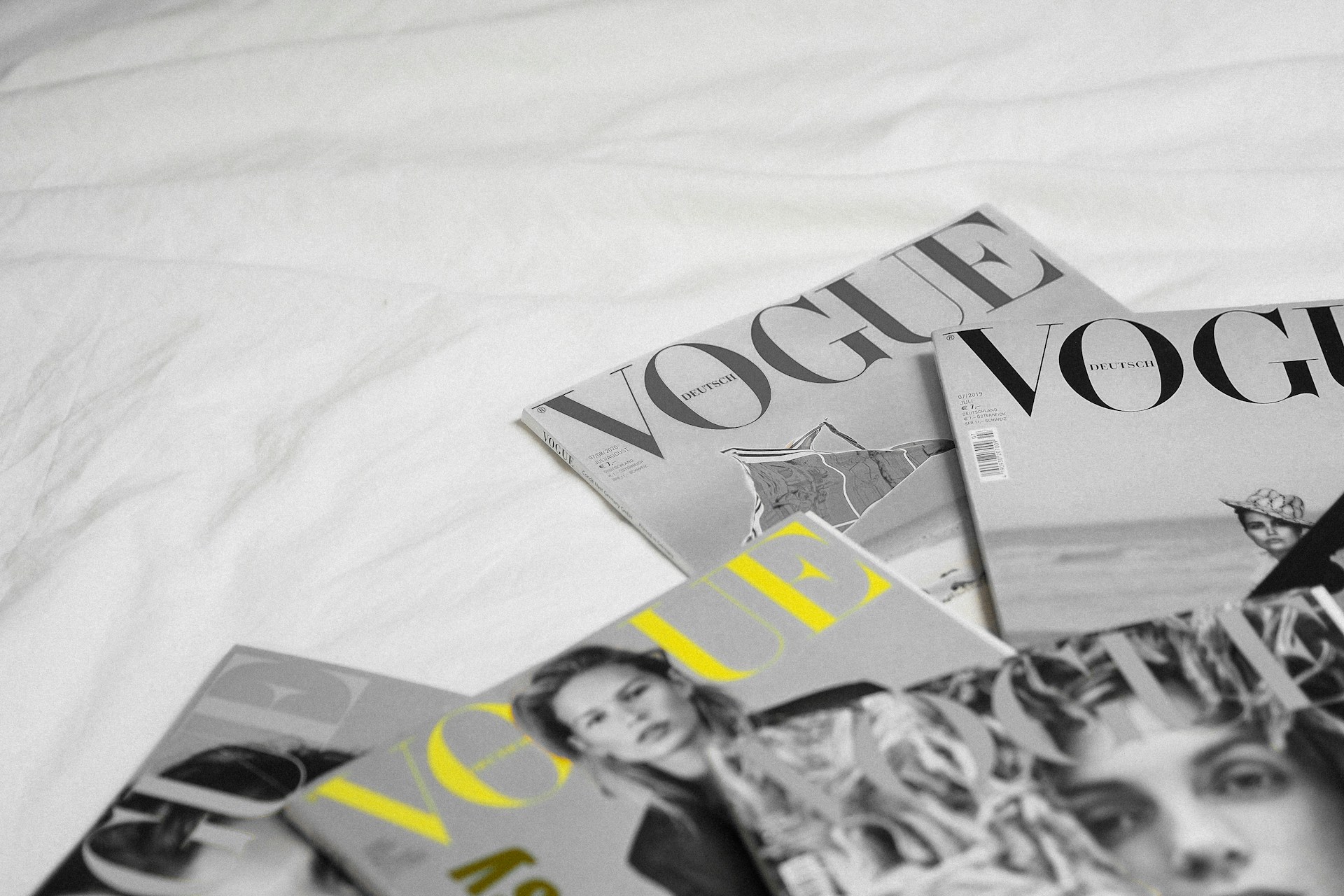
Life&Style Writer Alistair Porteous shines a light on Vogue’s shallow and lacklustre journalism
Does the world’s biggest fashion magazine have to sacrifice depth for style?
Every time I am at the airport, I like to buy a copy of British Vogue to read on my flight. The copies always seem to be cheaper in an airport WHSmith’s, and I find I need an easy read when I traverse the liminal space that is Gatwick. On my most recent flight, I flicked through some gorgeous photos of Billie Eilish in scarlet Balenciaga before my eyes drifted to the text below. I read her interview, and I made my way through the rest of the editorial content of the magazine. It was, for lack of a better word, boring.
A shallow alternative to other major publications
Now, I am a fan of Vogue, and do not get me wrong, the clothes are beautiful. British Vogue especially showcases incredible photography, style advice, and fashion commentary. However, when the magazine tries to write about anything else, it stands as a shallow alternative to other major publications. On British Vogue’s ‘Top Stories’ webpage, there are a series of headlines that match those of The Guardian and The New York Times. In those latter publications, coverage of culture or news seems researched, thoughtful, and interesting. But on Vogue’s website, those same stories are covered in short, underwhelming articles that dissipate all anticipation garnered by their catchy headlines. Detail is reserved for the difference between cerulean and turquoise – even the celebrity gossip feels afraid of endangering its reputation and class.
…pop culture has become as embedded in the fabric of Vogue as much as Louboutins or leopard print.
Now, maybe I need to manage my expectations. Vogue is a fashion magazine, its readers are surely uninterested in reading wordy opinion pieces that stray from Chanel and Loewe bags? A magazine that spends its budget on creating a glossy visual should not expect its readers to look beyond its perfect surface. I would agree with this if we were talking about the Vogue of the 1960s. But since Anna Wintour took over the helm of Editor-in-Chief at American Vogue in 1988, Vogue has made continued efforts to diversify its image and journalism. Famously and controversially, Wintour put Kim Kardashian and Kanye West on the April 2014 cover, and her editorship has seen the shift from the cult of the runway to the cult of celebrity. Professional models have been replaced by musicians and actors, and pop culture has become as embedded in the fabric of Vogue as much as Louboutins or leopard print. The magazine has shifted to a type of journalism that requires depth to maintain interest, people want to see more than chic when they read an interview with the greatest stars of today. It seems to me counterintuitive that a magazine on which celebrities dream of featuring refuses to ask them about anything deeper than their favourite moisturiser.
Good editorial journalism is sexy
Interestingly, other fashion magazines do not seem to struggle with this issue. Vanity Fair frequently mixes glamour with thought-provoking tell-all interviews that keep me engaged with more than just a bold lip. Vogue simultaneously maintains a desire to diversify its content with a commitment to being shallow. The magazine plays the journalistic equivalent of Paris Hilton, scared to let the beautiful, bimbo mask fall for fear of saying something interesting and therefore… unattractive.
With this issue, I feel that Vogue has a unique opportunity to improve. People will not stop reading Vogue, I certainly will not, and so many of its pages in every international print continue to innovate and inspire people with fashion, photography, and a singular beauty. With such a loyal audience, Vogue can experiment with all the diversified journalism it pleases. Be that a genuinely juicy and revelatory interview with Kylie Jenner, or a humorous and moving opinion piece by a journalist that doesn’t balance their career in writing with the runway. I don’t believe that Vogue will compromise its chicness with some tabloid shock factor, or some high brow intellectual discussion. Be it Spring-Summer or Autumn-Winter, good editorial journalism is sexy, and I reckon Vogue’s readership can handle a magazine that does beauty and brains. The world’s most successful fashion magazine will not lose its clout or style if it steps out of its last-season heels.
Enjoyed this? Read more from Redbrick Life&Style:
When Love Ends: The Fine Line Between Fandom and Obsession in Celebrity Breakups
Comments